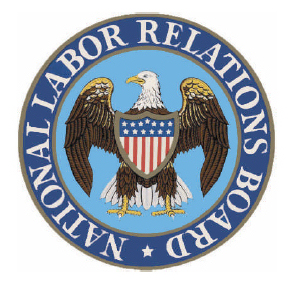 The DE OFCCP Week in Review (WIR) is a simple, fast and direct summary of relevant happenings in the OFCCP regulatory environment, authored by experts John C. Fox, Candee Chambers and Jennifer Polcer. In today’s edition, they discuss:
The DE OFCCP Week in Review (WIR) is a simple, fast and direct summary of relevant happenings in the OFCCP regulatory environment, authored by experts John C. Fox, Candee Chambers and Jennifer Polcer. In today’s edition, they discuss:
- OFCCP Recognized Asian American and Pacific Islander Heritage Month
- WHD Issued Final Rule to Simplify Retail or Service Industry Exemptions
- OSHA Adopted Revised Enforcement Policies for Coronavirus
- A Procedurally Odd Finale to the Secretary of Labor’s ‘Direct Final Rule’ on The Secretary’s Review of ARB Decisions
- NLRB Announced Public Outreach Sessions on “Quickie Election” Procedures
- WHD Issued Final Rule to Expand Access to the Fluctuating Workweek Method of Computing Overtime
Monday, May 18, 2020: OFCCP Recognized Asian American and Pacific Islander Heritage Month
In recognition of Asian American and Pacific Islander Heritage Month, the Office of Federal Contract Compliance Programs (OFCCP) announced it has helped over 3,900 Asians/Pacific Islanders receive back pay for instances of workplace discrimination.

“We’re continuing to be innovative and expand our compliance measures so that no person is disadvantaged in employment because of their race.”
Monday, May 18, 2020: WHD Issued Final Rule to Simplify Retail or Service Industry Exemptions

This Rule is effective on May 19, 2020.
Moving toward ensuring that it analyzes all businesses under the same standard, the U.S. Department of Labor (USDOL) on May 18, 2020, issued a Final Rule effective the next day withdrawing the list of establishments that the USDOL previously identified as having no retail concept, and the list of establishments that conversely could possibly be a retail business, for the purpose of determining whether the business’ commissioned employees qualified as exempt from overtime. This potentially opens up the availability to more employers to apply the retail sales overtime exemption to its commissioned employees.
Under the Fair Labor Standards Act (FLSA), commissioned employees working in a retail or service establishment may be exempt from overtime pay under the FLSA. To qualify for the exemption though, an employee’s regular rate of pay must be in excess of one and one-half times the minimum wage under the FLSA, and more than half of the employee’s compensation for a representative period must come from commissions earned from the sale of goods or services. 29 U.S.C. § 207(i).
Furthermore, the employee must be employed in a retail or service establishment, defined under the FLSA as a business which has at least 75% of its annual dollar volume of sales from goods or services which cannot be resold, and the particular industry the company serves recognizes the business as retail sales or services. Prior to the issuance of this new Final Rule, the Wage & Hour Division of the USDOL clarified which establishments were retail or service establishment by issuing regulations identifying a partial list of establishments that do not qualify as retail under any circumstance, as well as identifying a partial list of establishments that may be recognized as retail for purposes of the exemption.
With this new Final Rule, the USDOL has now eliminated these lists and will instead consider the applicability of the retail commissioned overtime exemption based on the requirements the FLSA sets out (and identified above). In other words, businesses that were previously identified as not having any retail concept are no longer hamstrung by the prior WHD list, and may rely instead on the standards the FLSA itself supplies.
The antiquated, and at times internally inconsistent, list had previously prevented many businesses such as banks, accounting firms, law offices, and medical clinics from applying the retail commissioned overtime exemption to its commissioned employees. As a result, these businesses were forced to pay overtime to their commissioned employees. Hopefully, the effect of the Final Rule will be to eliminate some of the confusion employers face in determining whether the retail commissioned overtime exemption applies, and also serve to provide clarity to the federal courts when analyzing the retail sales exemption.
Wednesday, May 20, 2020: A Procedurally Odd Finale to the Secretary of Labor’s ‘Direct Final Rule’ on The Secretary’s Review of ARB Decisions

By its terms, the DFR became effective on April 20, 2020. However, because the Department received significant adverse comments on the DFR, the Department has not exercised, and does not intend to exercise, any authority under the provisions contained in the DFR. The Department thus did not publish, and will not publish in the Federal Register, a document confirming the effective date of the DFR and withdrawing the NPRM. Instead, the Department has now issued a Final Rule to respond to the comments received in response to the NPRM and to go to final with it.
Explaining that after “carefully considering” the comments it received, the Department was now issuing the Final Rule, which, with the exception of the one substantive change to not rely on the DFR and some technical corrections, is identical to the substantive provisions of the NPRM-DFR.
The Final Rule establishes a system to allow The Secretary to exercise his discretion to review cases pending before or decided by the Board of Alien Labor Certification Appeals (BALCA) and the Administrative Review Board (ARB). The Department believes the new Rules will also ensure consistency with Secretary’s Order 01-2020.
This Final Rule will become effective on June 19, 2020.
Notes:
- BALCA – has authority over appeals from the decisions of the Employment and Training Administration’s adjudication of foreign labor certification applications
- ARB – has authority to hear appeals from the decisions of the Department’s Office of Administrative Law Judges (OALJ) about certain immigration, child labor, employment discrimination, federal construction/service contracts, and other issues, including Sarbanes-Oxley whistleblower appeals.
- The circumstances under which a federal agency may use a “Direct Final Rule,” limiting public notice and opportunity to comment and accelerating the date a DFR may become legally effective, is already legally controversial, although the Department in this attempted Rulemaking argued that its use of the DFR was entirely appropriate and legal. That is true even before you add the element in this Administration that Democrats and what are often called “community organizers” or “public interest groups” routinely oppose almost every Administration proposal in an effort to slow or stop it (the so-called “Full Court Press” Senator Schumer and Representative Pelosi have espoused to resist the Trump Administration). So here, in the final analysis, the Department retreated from its use of the DFR in light of the opposition its proposed use drew. Moreover, the DFR was unnecessary, at any rate, since the Department could (and did) fall back on the use of the NPRM to finalize it. Doing so achieved the same result as the now banished DFR (which sought to accomplish the very same regulatory reform). Dropping its reliance on the DFR also allowed the Department to deprive critics of a possible avenue in the courts to appeal the Department’s reliance on the DFR form of regulatory change).
So, who cares anyway?
This dispute is about only the seemingly ministerial decision of the Secretary of Labor to return to his desk the discretion to make his office the court of last administrative resort within USDOL. This is, after all, his authority to exercise, at any rate. But this contest offers just another window of observation into the daily struggles that each Presidential Administration undergoes to take control of the federal Executive Branch agencies each is charged to lead once the new Administration takes possession of The White House. Having obtained the raw legal authority to act, each Administration then struggles as it attempts to implement the new policy changes the people have voted to usher into the federal government. Each Administration learns that winning the votes is only the first hurdle to implement policy changes: the federal Executive Branch agencies, like OFCCP, OSHA, the Wage & Hour Division, etc., are a second and challenging hurdle to motivate to embrace the new Administration’s policy changes, or to force the agencies to accept. As political science students learn in college and in the real world of politics, federal agencies are entrenched bureaucracies, are their own interest groups, have their own mission, and will work to preserve and keep independent their power.
Wednesday, May 20, 2020: NLRB Announced Public Outreach Sessions on “Quickie Election” Procedures

See the WIR 12/13/19: NLRB Rolls Back the “Quickie Election” for the backstory on the modifications to the case procedures.
Training Available
The NLRB Southern California Regions 21 and 31 will hold training on the 2019 Amendments via phone. Two sessions are available:
Thursday, May 28, 2020, at 2:30 p.m. Pacific Time
Call (415) 527-5035
Access Code: 900 485 102
or
Friday, May 29, 2020, at 10:30 a.m. Pacific Time
Call (415) 527-5035
Access Code: 906 115 111
Questions?
Contact Danielle Pierce, Region 31 Supervisory Field Examiner, at (310) 307-7302 or Danielle.Pierce@nlrb.gov.
Wednesday, May 20, 2020: WHD Issued Final Rule to Expand Access to the Fluctuating Workweek Method of Computing Overtime

Under the new Rule, employers now must take the salary amount the employer pays and add to it any bonuses, premium payments, commissions, hazard pay, and additional pay of any kind to form the numerator (i.e., the number above the line in a fraction) to be divided by “total hours worked” as the denominator (i.e., the number below the line in a fraction). This change mirrors the Rule the George W. Bush administration proposed in 2008, but which did not go to Final in that form. Rather, the Obama Administration succeeded the Bush Administration and instead chose to issue a different Final Rule in 2011.
Background: An employer which requires or permits an employee to work hours which the FLSA recognizes as “overtime” (i.e., the employee works more than 40 hours in a workweek), is generally required to pay the employee premium pay for that overtime work. The FLSA then requires the value of the overtime to be a multiple of what the FLSA defines to be the employee’s “regular rate of pay” (which is always calculated as an hourly rate). Under 29 C.F.R. § 778.114, an employer is permitted to use the so-called “fluctuating workweek method” to calculate overtime for those employees who work different amounts of hours each workweek. The fluctuating workweek method is permissible so long as:
- the amount of the salary was sufficient to compensate the employee at a rate not less than the applicable minimum wage rate for every hour worked, and
- the employee received premium pay for all overtime hours worked at a rate not less than one-half the regular rate of pay.
Prior to this new Final Rule, employers with non-exempt, salaried employees working a fluctuating workweek schedule determined the regular rate of pay by merely dividing the fixed salary rate by the total number of hours during the workweek. For example, if an employee earned $500 a week in salary and worked 50 hours during the week, his or her regular rate of pay would be $10 per hour: ($500/wk over (divided by) 50 hours). Any other amounts the employee earned including bonuses, a premium payment, a commission, or other types of additional pay, would merely be compensation paid in addition to (i.e., “on top”) of the straight-time fixed payment. Moreover, an employer would not use those amounts “on top” to calculate the regular rate of pay to determine the overtime payment due.
Now, the employer must add the various other forms of compensation into the salary numerator to account for all of these various forms of employer-paid income to determine the regular rate of pay. This allows an employer greater flexibility in setting the fixed salary to pay an employee with a fluctuating workweek schedule, since previously an employer could only rely on the fixed salary amount to ensure compliance with the applicable minimum wage rate; with the change, an employer can now use other forms of compensation to obtain the applicable minimum wage rate to take advantage of the one-half overtime rate for employees with fluctuating workweek schedules (instead of having to pay one and one-half, or time and a half, overtime rate).
Additional Resources:
THIS COLUMN IS MEANT TO ASSIST IN A GENERAL UNDERSTANDING OF THE CURRENT LAW AND PRACTICE RELATING TO OFCCP. IT IS NOT TO BE REGARDED AS LEGAL ADVICE. COMPANIES OR INDIVIDUALS WITH PARTICULAR QUESTIONS SHOULD SEEK ADVICE OF COUNSEL.
SUBSCRIBE.
Compliance Alerts
Compliance Tips
Week In Review (WIR)
Subscribe to receive alerts, news and updates on all things related to OFCCP compliance as it applies to federal contractors.
OFCCP Compliance Text Alerts
Get OFCCP compliance alerts on your cell phone. Text the word compliance to 55678 and confirm your subscription. Provider message and data rates may apply.

